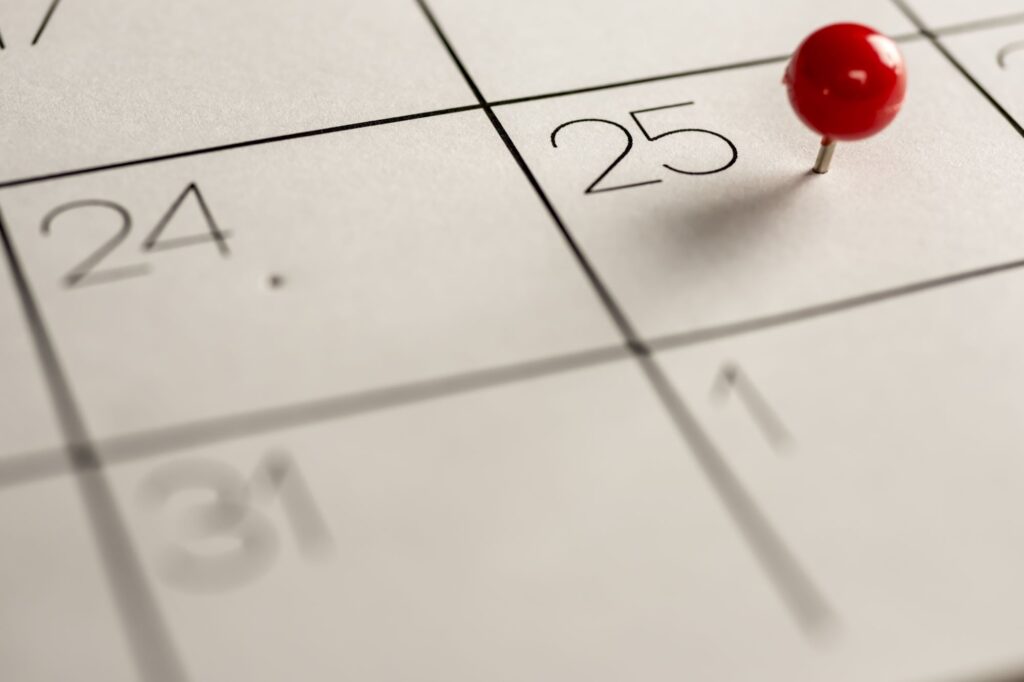Creating a moving checklist involves outlining every task from two months before the move until moving day. This article will guide you through each step, detailing what to include – from booking movers and organising belongings to notifying utilities and setting up in your new home. You’ll learn how to create a moving checklist that keeps you on track and stress-free.
Key Takeaways
- A moving checklist helps organise, prioritise, and streamline tasks from two months before moving to the day itself, reducing stress and improving time management.
- Choosing an optimal moving date involves considering factors like season, demand, and personal schedules to ensure a smooth move.
- Starting preparations early, such as two months before, allows for thorough decluttering, organising, and budgeting, leading to a more efficient and less stressful moving experience.
Understanding the Importance of a Moving Checklist
A moving checklist functions as a reliable guide throughout the moving process, keeping you aligned with all the tasks that need to be done. It’s designed to take you from two months before the move-in date right up to the day of the move. Picture it: a systematic guide that helps you prioritise and manage your tasks, ensuring nothing is overlooked.
The primary purpose of a moving checklist is to instil organisation, optimise time, and prioritise tasks. Moving is a big job, and breaking it down into smaller, manageable steps can save you time and energy. This structure not only makes the process more efficient but also reduces the stress typically associated with moving.
Furthermore, a moving checklist facilitates transparent communication. If you’re moving with family members or roommates, it helps track everyone’s progress and responsibilities. This prevents the oversight of crucial tasks, such as notifying important parties about your address change or arranging utilities. By keeping everyone on the same page, the entire moving process can become a team effort rather than a solo struggle.
Other benefits of maintaining a moving checklist include:
- Improved time management
- Cost efficiency
- A sense of control over the move
- Minimising disruptions
- Staying within budget
With a checklist in hand, you can focus on enjoying the excitement of your new adventure rather than getting bogged down by details.
Setting Your Moving Date
Selecting an optimal moving date is a significant part of the moving process. The season, month, and even the day of the week can significantly impact your moving experience. Here are some factors to consider when choosing a moving date:
- Spring: Offers favourable weather and lower demand for moving services, but it can coincide with the school year and flu season.
- Summer: Popular due to school breaks, but the high demand can make it more expensive and harder to schedule.
- Fall: Mild weather and lower demand, but it can be affected by hurricane season in certain areas.
- Winter: Lower demand and potentially lower costs, but weather conditions can be challenging in some regions.
Consider these factors and choose an exact date for your moving date that best suits your needs and preferences.
Some factors to consider when choosing a moving date are:
- Mid-month and mid-week dates can be less expensive due to lower demand compared to weekends and month-ends.
- If you’re coordinating the sale and purchase of homes, you’ll need to align with various parties and legal agreements, which can be complex.
- If you have kids, consider the school year and holiday breaks, though these times can also have a high demand for moving services.
After deciding on the most suitable time for the move, remember to schedule the collection of keys for your new property. This small but critical detail ensures you can access your new home without any hiccups on a moving day. With your moving date set, you can start packing and making other necessary arrangements, keeping your move on track.

Two Months Before Moving
Starting the organisation process two months prior to your move is ideal. Begin by creating a moving binder to keep all your important documents, moving house checklists, and notes in one place. This binder will be your go-to resource throughout the moving process. Print out moving checklists and keep track of furniture measurements and other essential details.
Subsequently, here are the steps to follow when preparing for a move:
- Begin categorising and decluttering your belongings. Decide what to keep, what to discard, and what to donate. This step not only reduces the amount of stuff you have to move but also helps you start fresh in your new home.
- Once you’ve sorted your items, you can start packing the first box. Make sure to label each box with its contents and the room it belongs to for easy unpacking later.
- It’s also a good idea to back up your computer files to ensure you don’t lose any important data during the move. Consider using an external hard drive or cloud storage for added security.
By following these steps, you can make your move more organised and efficient.
Getting written details from multiple companies will help you compare services and prices …
Research moving companies and request on-site estimates. Getting written details from multiple companies will help you compare services and prices, ensuring you choose the best option for your needs. Don’t forget to set a moving budget. Account for expenses like boxes, moving services, and any new items you might need for your new house. This will help you manage your finances and avoid any unexpected costs.
Lastly, if you’re currently renting, make sure to adhere to your tenancy agreement. Give any required advance notice and consider hiring end-of-lease cleaning services to ensure you get your security deposit back. By taking these steps two months before your move, you’ll be well on your way to a smooth and organised transition.
One Month Before Moving
As the moving date nears, it becomes necessary to undertake more specific tasks. One month before your move, notify your utility companies about your move. This ensures you have services set up at your new home and avoids any interruptions. Begin packing non-essential items like clothes and other items you won’t need immediately. This will help you get a head start on packing and reduce last-minute stress.
Booking your moving truck is another task of paramount importance. Make sure to book it well in advance to ensure availability and that it meets your requirements. If you’re moving to a new location with different banking options, transfer or close your bank accounts. This will help you avoid any financial disruptions during your move.
Additionally, here are some tasks to consider when moving to a new area:
- Transfer your prescriptions to a new pharmacy to avoid delays in medication
- Settle any local memberships, such as gym memberships, that require payments
- Notify your insurance company about your move to update your records accordingly
- Contact a local internet provider to schedule an internet connection installation at your new home
- Update your driver’s licence with your new address
Identify new healthcare providers in your new area to ensure continuity of care. Finding a new doctor, dentist, and veterinarian will help you and your family feel more settled in your new community. By completing these tasks one month before your move, you’ll be well-prepared for the final stages of the moving process.
NOTE
Completing these tasks a month before your move ensures ample time for logistical arrangements, reduces last-minute stress, and helps avoid disruptions in services, finances, and healthcare upon relocation, ensuring a smoother transition to your new home. Early planning also allows for flexibility in scheduling and ensures you have necessary arrangements in place for a seamless move.
Two Weeks Before Moving
With only two weeks left, it’s time to finalise pending tasks. Begin by updating your contact information with important organisations such as utility suppliers, insurance companies, and government agencies. Arrange for the forwarding of your post with Royal Mail by visiting their website or your local post office. This ensures you don’t miss any important mail during your move.
Organise school records for your children and arrange their transfer to the new school district. This will help make their transition smoother and ensure they don’t miss any important school days. Finalise and check over your arrangements with your removals company. Confirm the details to avoid any last-minute surprises on a moving day.
Here are some tips to help you during your move:
- Inform local services, such as milkmen and newspaper deliveries, of your move.
- Create a folder for bills and receipts to keep everything organised.
- Ensure that flammable, corrosive, and poisonous items are either recycled or disposed of properly to prevent any harm to the environment and human health.
- Make sure to return any items you’ve borrowed to neighbours, family, and friends as soon as possible. It’s important to maintain good relationships by being responsible for borrowed items.
- Finding a babysitter can also be a great help on moving day, so you can focus on the task at hand.
- Finally, back up your computer to ensure you don’t lose any important files during the move.
By completing these tasks two weeks before your move, you’ll be well-prepared for the final stages of the moving process. This will help ensure a smooth and stress-free move to your new home in Canary Wharf.
One Week Before Moving
The last week before your move is dedicated to completing the remaining tasks and ensuring preparedness. Here are some things you should do:
- Collect all your keys.
- Pack a 24-hour moving kit. This kit should include essential items you’ll need immediately upon arrival at your new home.
- Tag your furniture with labels indicating their placement in the new home to assist movers.
Prepare a survival kit with essential items in case the moving truck arrives late. This kit should include:
- Snacks
- Bottled water
- Toiletries
- A change of clothes
Get rid of perishable items by scheduling a meal plan to use them up. This ensures you don’t waste any food and have less to move.
Ensure all pending deliveries are forwarded to your new address if they don’t arrive on time. Give out address cards to family and friends with your new details. This will help ensure everyone is aware of your new address and can stay in touch. By completing these tasks one week before your move, you’ll be well-prepared for the big day.
Moving Day Essentials
Having a few necessities readily available on the moving day can significantly ease the process. Here are a few items to have on hand, as part of your moving house checklist:
- Valuable possessions
- House keys
- Important documents
- Overnight bags packed with nightclothes and a change of clothes for the next day
This ensures everyone has what they need without having to rummage through all the boxes.
In the kitchen, keep a mug, plate, knife, fork, spoon, instant coffee or tea, a kettle, bottled water, and snacks accessible. For the bathroom, have towels, toiletries, toilet paper, soap, cleaning supplies, a first aid kit, and essential medications on hand. These items will help you settle in quickly without having to unpack all your boxes immediately.
Basic tools such as screwdrivers, a drill, a hammer, masking tape, and a utility knife should also be kept handy on moving days. Other accessories to keep available include pencils and paper, light bulbs, bin liners, shelf liners, a portable radio, and pet supplies. If you have young children, pack a DVD player, a couple of books, baby changing supplies, games, and soft toys to keep them entertained and comfortable during the move.
By keeping these essentials handy, you can ensure that your moving day goes smoothly and that you have everything you need to start settling into your new home in Canary Wharf.
Settling into Your New House

Upon arrival at your new home, start by unpacking your essentials box and installing your vital appliances. Protect your floors and carpets while unpacking, and start by setting up the basics in your new home. Changing the locks on your new doors adds an extra layer of security and peace of mind. To ensure a smooth transition, consider using a house checklist.
Checklist for moving to a new neighbourhood:
- Check the rubbish pickup schedule to avoid missing collection days.
- Schedule a visit with your new vet to introduce them to your pet and ensure they receive any necessary care.
- Get to know your neighbours and explore your new neighbourhood to feel more integrated into your new community.
Finish unpacking and focus on tasks that make your new house feel like home, such as setting up curtains, going grocery shopping, and thanking your real estate broker. In the week following your move, leave a review for the moving company, clean your new home thoroughly, and make sure to inform friends and family of your arrival.
By completing these tasks, you’ll be well on your way to making your new house in Canary Wharf feel like home.
Downloadable Moving Checklist
For your convenience, downloadable moving checklists in both PDF and Excel formats are available online. The PDF format requires Adobe Reader for viewing and printing. The Excel template allows you to add or remove items as needed, making it fully customizable to your specific moving needs.
Having a printable moving checklist ensures you can keep track of all your tasks and stay organised throughout the moving process. Download your moving checklist today and take the first step towards a smooth and stress-free move to your new home in Canary Wharf.
Summary
A moving checklist is an indispensable tool for ensuring a smooth and stress-free moving process. It helps organize each step, from setting your moving date to settling into your new home, thereby avoiding last-minute surprises. The checklist enhances time management, cost efficiency, and communication, making the move more manageable. Key stages include early preparations, tackling tasks at one-month and two-week intervals, and being fully prepared for moving day. Download our customizable moving checklist to stay organized and enjoy the excitement of your new adventure. Happy moving!
Frequently Asked Questions
What should I include in my moving binder?
Make sure to include your moving checklist, important documents, receipts, and notes in your moving binder. This will help you stay organised and on top of everything during your move.
When should I start packing for my move?
You should start packing non-essential items two months before your move. This allows you to organise, declutter, and pack without feeling stressed.
How do I choose the best moving company?
To choose the best moving company, research and request on-site estimates with written details from multiple companies, and compare their services and prices to find the best fit for your needs.
What should I keep handy on a moving day?
On a moving day, keep valuable possessions, house keys, important documents, and an overnight bag for each family member handy. Also, have essential kitchen and bathroom items, basic tools, and supplies for young children available.
How can I make my new house feel like home?
To make your new house feel like home, start by unpacking essentials, setting up appliances, changing locks, getting to know your neighbours, and then personalising the space with curtains, decorations, and other homey touches. Enjoy settling in and making it your own!







